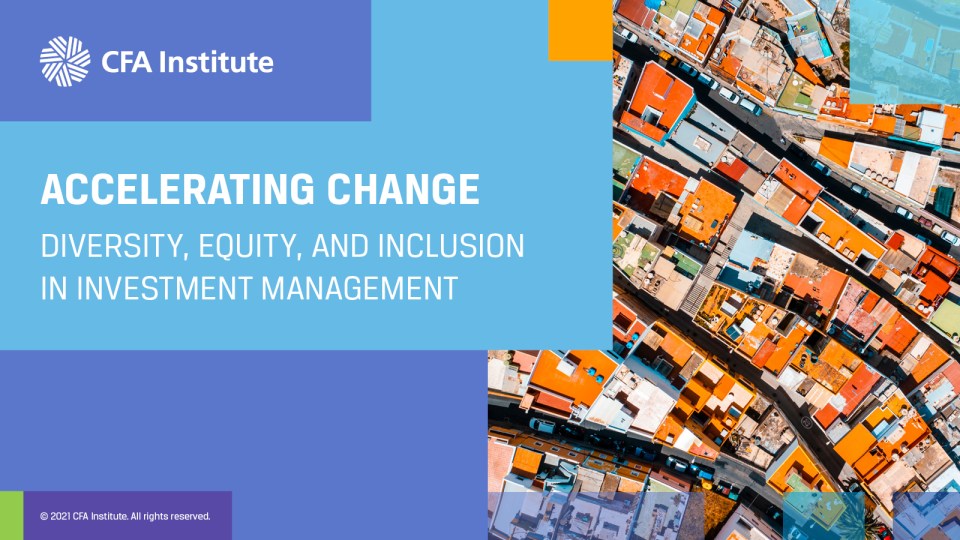
Closing the gap: gender lens investing and the future of finance

Public perception of gender equality issues runs in a repetitive cycle. We’ve all seen it. A scandal breaks out, or a study discovers yet another damaging disparity. Think pieces are written, hands are wrung, and companies promise to do better. Then the public’s attention moves on until another cycle starts. Actual change comes very slowly, if at all.
This is especially true in the world of investing and investment funding. These are male-dominated fields where inequality grows more and more lopsided the higher up you go. These are well-known issues, and many firms have declared their intention to address various forms of inequality, both in their behaviour as employers and in their influence as investors. But again, change comes slowly.
So, what’s the best way to move forward?
While hiring more women, especially in positions of real influence, is important, it isn’t enough. In finance and investment, the most powerful approach to achieving parity may be gender lens investing. There are many reasons different firms and businesses might adopt gender lens investing. For example, it can benefit people around the world, help develop new and neglected markets and sectors and improve the overall quality of life.
And then there’s the basic, foundational reason why any investor should support gender lens investing: it is a good investment.
What is gender lens investing?
Gender lens investing is a form of impact investing. Such investments are intended to create a beneficial social or environmental impact alongside the expected financial return. While green and other such funds and investments have been around for a while, what distinguishes gender lens investing is that it represents the difference between an investment that happens to benefit women and girls and an investment that, from inception, is intended to benefit women and girls. Gender lens investing is, therefore, a framework by which investors can create real impact and do so in a substantial way.
Approaching equality and impact through gender lens investing means investing in enterprises that are owned or run by women, enterprises that encourage workplace equality and enterprises whose output improves the lives and economic prospects of women and girls.
Gender lens investing has a wide range of goals, and individual efforts can focus on specific aspects, regions, and opportunities. But closing the “gender gap” in both the investee firm and the investor’s firm is the primary mission. Gender lens investing approaches diversity from the ground up. It tries to avoid “gender washing,” or bringing in women for appearances’ sake, and seeks to empower them on investment teams and place them in positions of real authority.
The benefits of gender lens Investing
The business and investment world is discovering, however slowly, that diversity, gender parity, quality of life, and so on are not just buzzwords. They have a real impact on the bottom line. Studies have repeatedly shown that companies with diverse founders, especially when women are included from the beginning and have real influence as the business grows, perform better over the long term.
In bare numbers, when these conditions are met, those businesses outpace the market, earn higher returns, and make things better for women in the future. Gender-balanced investment teams beat expectations by 10% to 20%. The International Finance Corporation found businesses with gender parity in their leadership teams had valuations up to 25% higher than teams with lower gender diversity.
This is all quite logical. Business is all about innovation, the next great idea. And no company is going to be innovative, creative, and dynamic if company leaders have the same education, the same MBA, the same internships, and the same perspectives as their colleagues. It isn’t about abandoning that traditional route to success in business. It’s about having different ideas that can build on each other and lead to something new. This diversity of thought is central to innovation at the corporate and board levels as outlined in Blue Ocean Strategy and Governance Reimagined.
Trends, opportunities and challenges
There are considerable efforts underway to “mainstream” gender lens investing, to move it from a niche investment opportunity to a strategy on par with any other. While it has a long way to go to achieve that, it is a growing field. Alternative investment strategies that emphasize the gender lens space account for almost $8 billion (about £6.4 billion), up two-thirds from 2018. The G7 has committed to raising another $15 billion (about £12 billion). Things are moving in the right direction, and opportunities abound.
The gender lens investing mindset can find growth opportunities outside the scope of traditional investment firms. For example, women in Africa oversee just 6% of funds, often in the microfinance subsector. Women own 40% of African small and medium enterprises (SMEs), but only 20% have access to traditional funding paths. The gap here is more than $40 billion (about £31.8 billion), and gender lens investing can help close it.
India represents another opportunity where gender lens investing can mean the difference between lip service and actual change. Many business leaders in India have expressed interest in increasing gender equality. But the goal remains elusive, and in some ways ground is being lost. Between 2017 and 2019, the number of Indian start-ups with at least one female founder dropped from 17% to 12%. And of the start-up founders who receive early-stage venture capital funding and beyond, fewer than 1% are women. Gender lens investing addresses such issues directly.
This is especially important in the age of COVID-19. The pandemic has created something of a global rollback in the progress women have made in business and the workplace. Traditionalist gender roles have led to women once again shouldering a disproportionate share of domestic responsibilities. Systemic inequality has become more acute.
GLI and GEM: A case study
Gender lens investing isn’t superficial. It’s not a band-aid or public relations strategy. It can help businesses and investment firms have a beneficial impact. A brilliant example of this is Mennonite Economic Development Associates (MEDA), an international economic development organization that works to alleviate poverty.
MEDA uses the Gender Equality Mainstreaming (GEM) Framework to help their mission. The GEM Framework “is a practical manual and toolkit for assessing gender equality and identifying, implementing and measuring gender equality mainstreaming strategies within companies.” Good gender lens investing embraces a holistic approach, and GEM can help integrate gender equality with other impact investment efforts, such as environmental, social and governance (ESG).
MEDA’s GEM self-assessment is an excellent first step for firms with gender equality goals. Companies can use it to measure their internal and public-facing behavior on gender equality, identify areas where they need improvement, and then gauge the impact of any changes they implement.
GEM is designed for scalability and can serve firms and funds of all sizes and specializations, from private equity outfits to tech accelerators and NGOs.
What’s next?
“Never leave money on the table.”
At its core, this saying reminds us not to pass up those opportunities that are right in front of us. It is high time the world of investing and finance realises that by excluding women in the first place and by dragging its feet on their active inclusion, it has left an enormous amount of money on the table. And it has done so for decades.
If women were equal participants in the workforce, it could add $28 trillion to annual global GDP. The investing industry needs to seize this opportunity. As more and more firms come to grasp how much gender inequality costs us all, they won’t leave that money on the table for much longer.
To read more on the actions taken by 41 investment organizations—Experimental Partners (XPs), members of the CFA Institute Experimental Partners Program—to advance diversity, equity, and inclusion (DEI) in their organizations click here.

If you liked this post, don’t forget to subscribe to the Enterprising Investor.
By Sameer S. Somal, CFA, CEO of Blue Ocean Global Technology and co-founder of Girl Power Talk.
And Ian Robertson, CFA, a portfolio manager, director and vice president at Odlum Brown Limited, Vancouver, British Columbia.
All posts are the opinion of the author. As such, they should not be construed as investment advice, nor do the opinions expressed necessarily reflect the views of CFA Institute or the author’s employer.
Image credit: ©Getty Images/LaylaBird